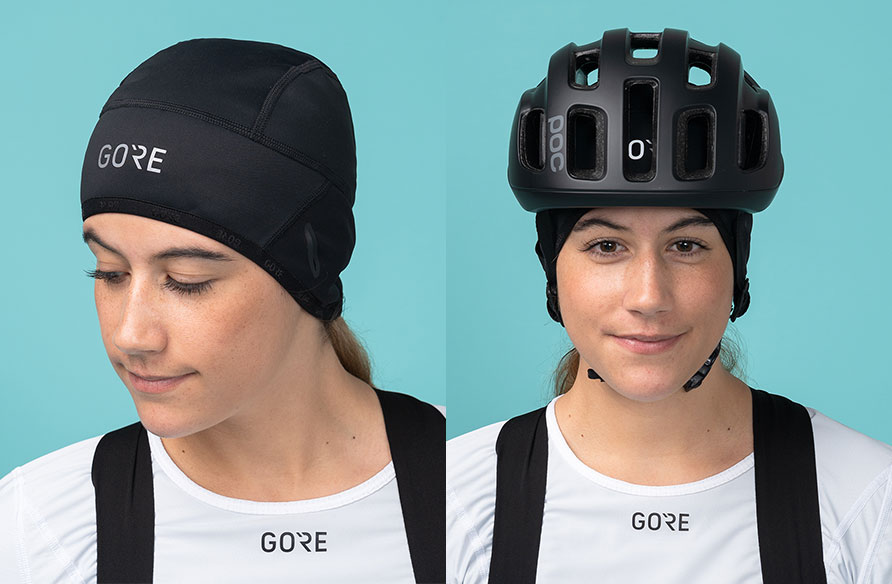
Welcome to the Winter Apparel Guide
When the mercury drops and some cyclists trade their road bikes for trainers, others look forward to the beauty and the solitude of winter riding. As any year-round rider can attest, the right clothing is the key to winter riding success, and a single poor choice can sap the enjoyment from an otherwise successful outing. In this guide, we’ve highlighted our favorite pieces and accessories by temperature range to ensure that your kit keeps you warm and dry during the most underrated riding season.




Jackets
Your jacket is the workhorse of your winter kit and an essential outer layer for the prepared winter rider. Responsible for blocking frigid wind and precipitation while keeping you warm—but not too warm—the right jacket will cover a wide range of conditions and should be selected with your area’s specific winter weather in mind.
Assos Mille GT Spring Fall Jacket
The combination of impeccable fit and carefully placed wind and water-resistant panels make this pinnacle softshell jacket a stunningly versatile option for milder conditions.

Castelli Double Espresso Jacket
Windproof GORE-TEX INFINIUM™ fabric and a brushed fleece lining make this jacket Castelli's warmest option and an exceptional piece for everyday winter riding in all but the most frigid conditions.

Giordana AV Extreme Jacket
For sub freezing conditions, the combination of a stretchy waterproof breathable membrane and highly efficient Polartec Alpha insulation makes this possibly the world's warmest winter riding jacket.

Gore Wear C7 GORE-TEX SHAKEDRY™ Stretch Jacket
For those living in milder climates, the C7 SHAKEDRY™ Stretch offers proven protection from whipping winds and torrential rain in a stretchy, lightweight package that easily stows in a jersey pocket.

Long Sleeve Jerseys
Depending on your location, a long sleeve jersey can serve as a warming mid layer in frigid temps or as a highly effective outer layer for warmer days and milder climes. Keep your intended use in mind, as features like water resistance and wind-blocking panels translate into additional comfort when worn in lieu of a jacket.
Castelli Trasparente V Jersey
Weather protective Polartec Neo Shell fabric at the front panels paired with breathable Nano Flex Xtra Dry material at the rear help this jersey transition between a mild weather outer layer and toasty cold weather midlayer..

PEARL iZUMi PRO Merino Thermal Jersey
Thanks to its merino wool material, which stays warm even when wet, this midwinter midlayer is able to adapt to an extremely wide range of conditions, making it a fitting cornerstone piece of a well-considered winter wardrobe.
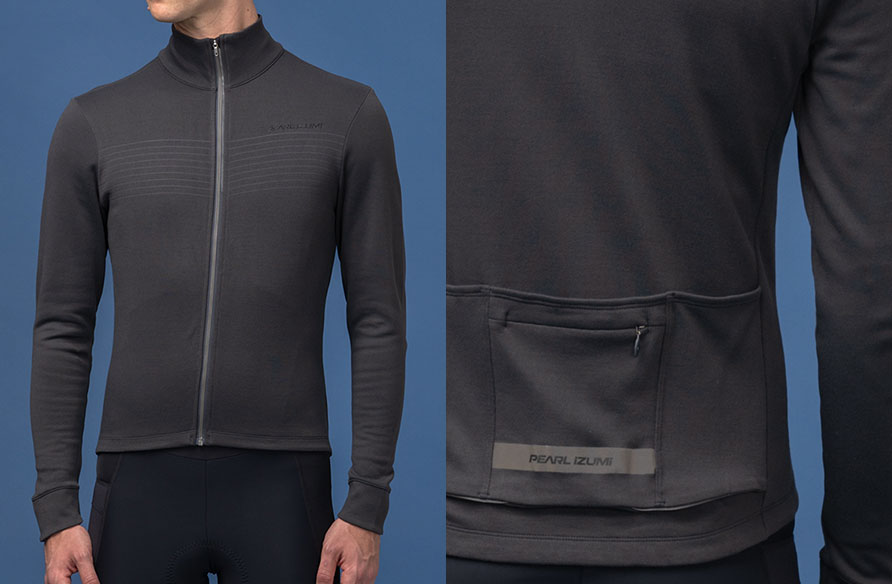
Castelli Nelmezzo RoS Jersey
The warming fleece lining makes this jersey an excellent midwinter layer for the season's coldest days, while its water resistance is perfectly suited for use as an outer layer when spring arrives.

Castelli Perfetto RoS Jersey
Intended to be the "perfect" balance between the protection of a jacket and the comfort of a jersey, the Perfetto is one of our longstanding favorites—and an easy choice when temperatures are mild and conditions unpredictable.
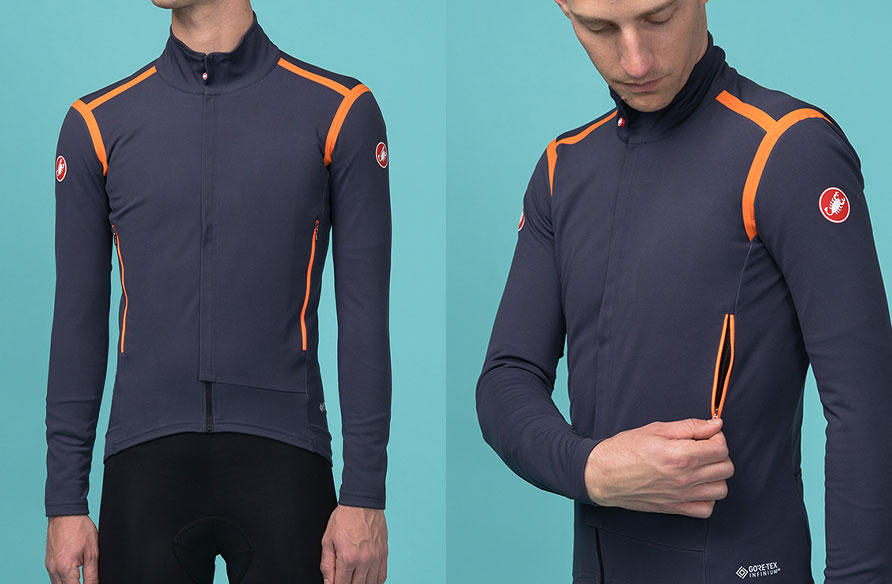
Baselayers
Although its importance is sometimes overlooked, a good baselayer is a critical component of a strong winter kit. Look for an appropriate amount of warmth for the temperatures in your area and demand excellent moisture-wicking properties—moisture management is essential for staying warm and comfortable in the cold.
Assos Skinfoil Spring/Fall Baselayer
Aimed at efficient moisture transfer rather than maximum heat retention, this baselayer is built to keep you dry, enabling maximum mild-weather comfort under a jacket or long sleeve jersey.
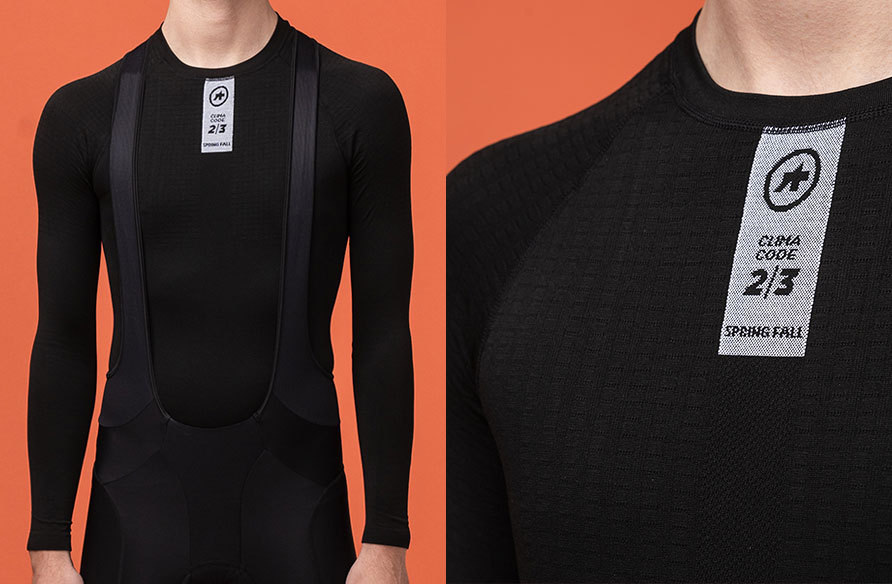
Castelli Flanders Warm Baselayer
A plush brushed fleece backing adds considerable warmth, while the synthetic materials and mesh underarm panels enhance the wicking capabilities of this versatile cold weather piece.

PEARL iZUMi Merino Thermal Baselayer
Leveraging merino wool's impressive insulation properties, this cold weather baselayer retains warmth even when wet, ensuring that you'll stay comfortable during hard efforts on the season's coldest days.

Gore Wear WINDSTOPPER™ Baselayer
When howling winds threaten to derail your ride, reach for this 100% windproof and highly water resistant piece, which guarantees that even the harshest winter precipitation won’t sap your precious body heat.

Bib Tights
A great set of bib tights is a balancing act between appropriate weather protection, just enough warmth, and the same considerations that affect bib short choice such as fit, materials, and chamois. Although bib shorts and knee warmers typically get the nod on warm winter days, we consider bib tights a cornerstone of a well-stocked winter wardrobe.
Castelli LW 2 Bib Tight
For days where bibs and knee warmers aren't quite enough and mid winter bib tights are overkill, Castelli's Light Winter bibs are an ideal compromise, offering just enough warmth and protection for moderately cold rides.

PEARL iZUMi Elite Escape AmFib Bib Tight
Designed to cover a range of cold conditions, these versatile bib tights blend a warming fleece backing with highly weather-resistant AmFib softshell fabric that easily shrugs off sleet and snow.
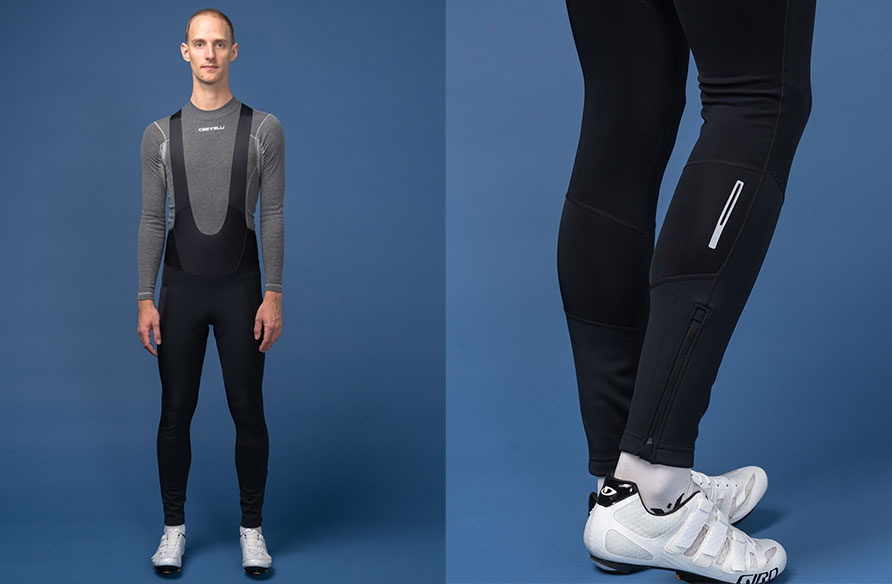
Assos Bonka Evo Bib Tight
Offering support and features found in the world's finest bib shorts, these pinnacle bibs employ a suite of proprietary fabrics designed specifically for winter riding, making these the best choice for sub freezing temperatures.

Castelli Nano Flex Pro 2 Bib Tights
Built to shrug off heavy precipitation without being stifling in milder conditions, these bib tights are ideal for both variable shoulder season days and mid-winter action in climates where the temps stay well above freezing.
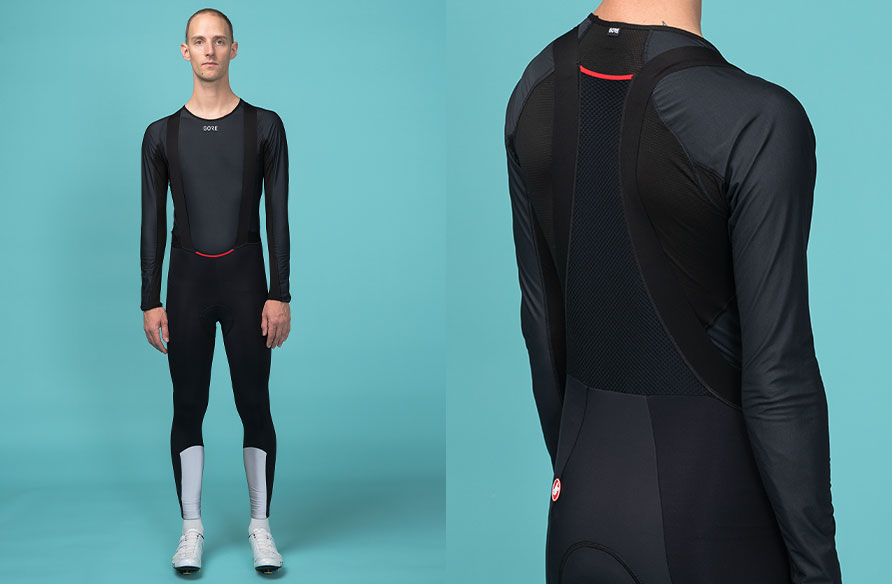
Gloves
For seasoned winter riders, gloves are the subject of much debate as the correct amount of warmth and insulation varies both by your climate and your physiology. It’s worth the time to get this choice right. The perfect pair of gloves can expand the weather range of your kit.
Assos Assosoires Spring/Fall Gloves
Although the full finger design and brushed material give these away as cold weather gloves, these standouts are sufficiently lightweight to ensure that your hands won't overheat on shoulder season rides.

Castelli Spettacolo Gloves
True winter-worthy riding gloves need not be bulky or uncomfortable, as proven by these waterproof and well insulated offerings, which offer impressive warmth in a sleek, low-profile silhouette.

PEARL iZUMi PRO AmFib Lobster Gloves
For the coldest conditions, there's no substitute for mittens, and these lobster-style gloves offer the warmth of mittens without compromising control of your bike, while the weather-resistant softshell material enhances foul-weather functionality.

Gore Wear C5 GORE-TEX Thermo Gloves
Offering guaranteed protection from wind and rain, these insulated riding gloves are ideal for coastal climates and temps hovering around freezing, where precipitation could take the form of rain, snow, or sleet.
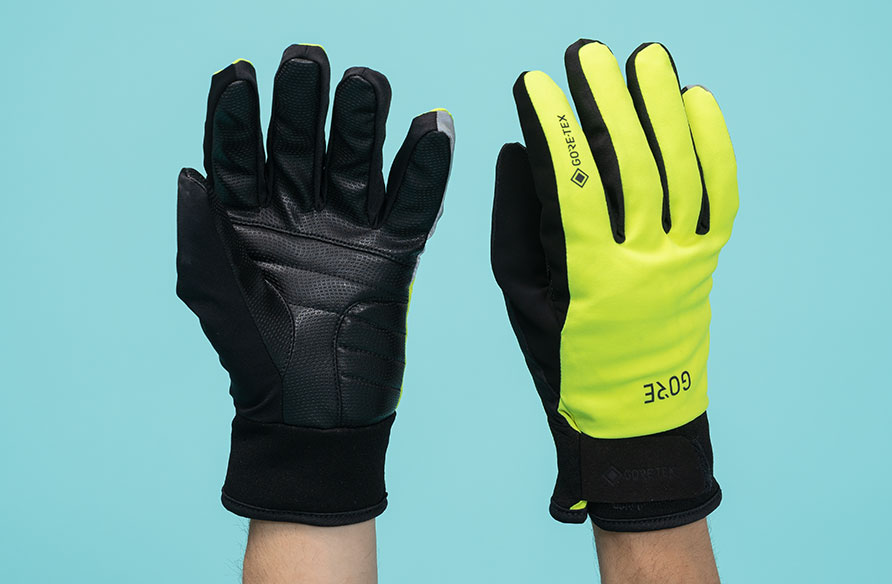
Shoe Covers
The extremities are the first parts of the body to succumb to cold, which makes keeping your feet warm an essential piece of the puzzle. To get the best from any of these options, consider pairing with a set of shoes a half size larger than you’d typically wear. That extra room allows for better circulation which directly translates into extra warmth.
Assos Assosoires Spring/Fall Booties
These low-profile booties borrow the sleek profile of an aero shoe cover and add just a touch of warmth, making them ideal on early winter rides.

Castelli Poggia 3 Shoe Covers
Designed to shed rain and keep your feet dry for hours on end, these midweight shoe covers are optimal for midwinter riding when wheel spray can quickly result in frozen feet.
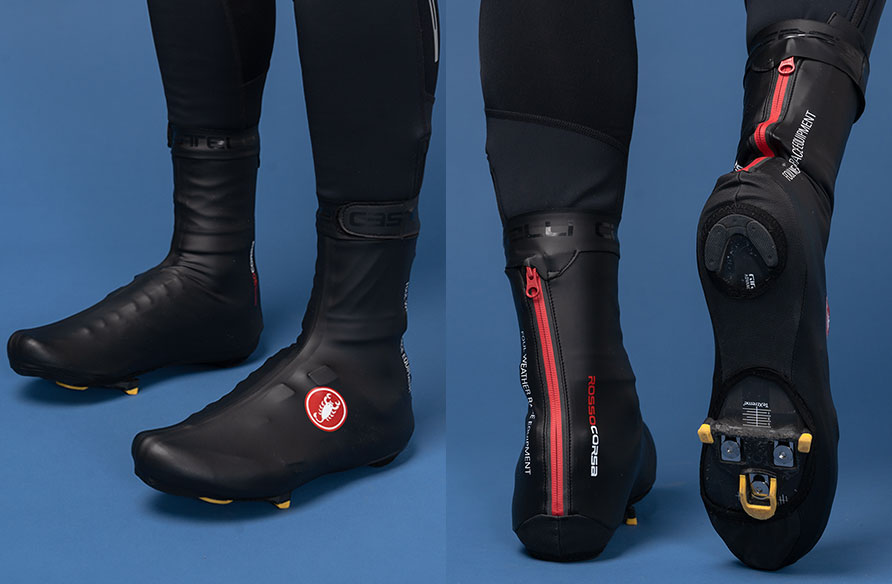
Castelli Estremo Shoe Covers
The warmth and weather protection offered by these fleece-backed, GORE-TEX shoe covers make them an indispensable piece for any rider heading out into winter storm conditions.
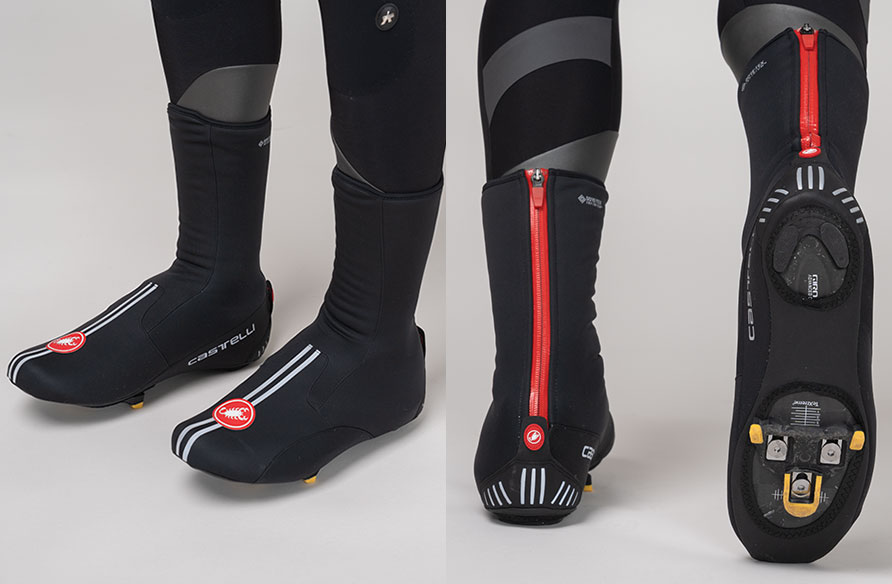
Gore Wear C3 GORE-TEX Overshoes
When faced with consistent precipitation, these guaranteed waterproof GORE-TEX overshoes are ideal, effortlessly shrugging off rain, sleet, and the heaviest wheel spray.
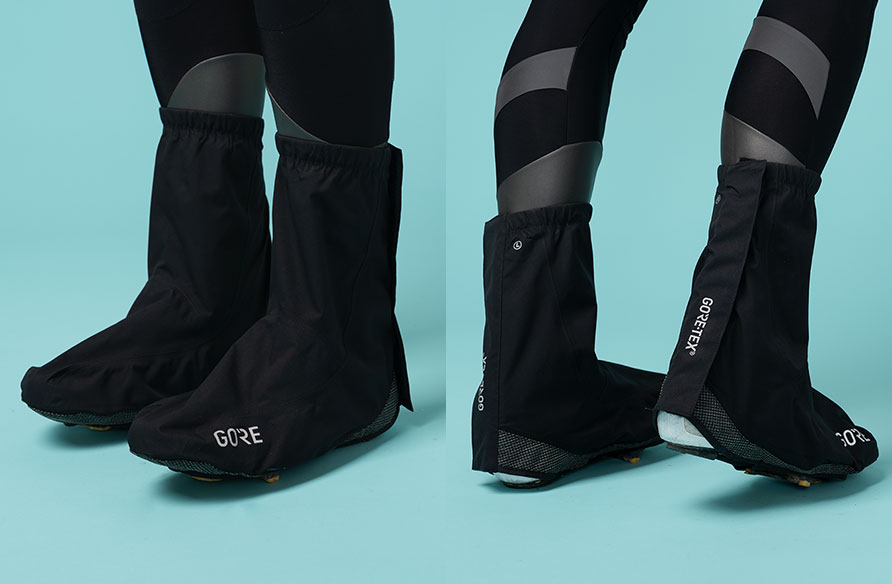
Cycling Caps
Much like gloves, the right winter cycling cap can expand the range of your kit. Insulation and wind-blocking materials retain maximum warmth, while a lightweight option keeps you from overheating on warmer days.
Castelli Viva2 Thermo Skully Hat
Sleek and low profile, this lightweight cap fits easily under a helmet without extra bulk, adding the right amount of warmth for milder days.

Castelli Difesa Thermal Cap
Think of this as a prototypical winter cap, with a rib knit flap to keep ears warm and a visor that offers just enough coverage to keep winter precipitation out of your eyes.

Assos Assosoires Ultraz Winter Face Mask
This balaclava-style hood fits seamlessly under your helmet and will keep frigid wind off your face, minimizing the risk of frostbite on the season's coldest rides.

Gore Wear WINDSTOPPER™ Thermo Beanie
This beanie's windproof and highly water resistant fabric keeps cool breezes and frozen precip from sapping your body heat, adding a shocking amount of warmth to your winter riding kit.

Jackets
Your jacket is the workhorse of your winter kit and an essential outer layer for the prepared winter rider. Responsible for blocking frigid wind and precipitation while keeping you warm—but not too warm—the right jacket will cover a wide range of conditions and should be selected with your area’s specific winter weather in mind.
Giordana AV-100 Jacket
Offering impressive weather protection with a slim silhouette that wears like a jersey, this lightweight jacket is ideal for hard efforts in variable conditions, especially when it's crisp, rather than really cold.

Assos UMA GT Winter Jacket
Impressive weather protection, courtesy of Assos's exclusive NEOS fabric, and a sleek, low profile fit make this one of our favorite winter staple pieces, suitable for layering up or down as the weather demands.
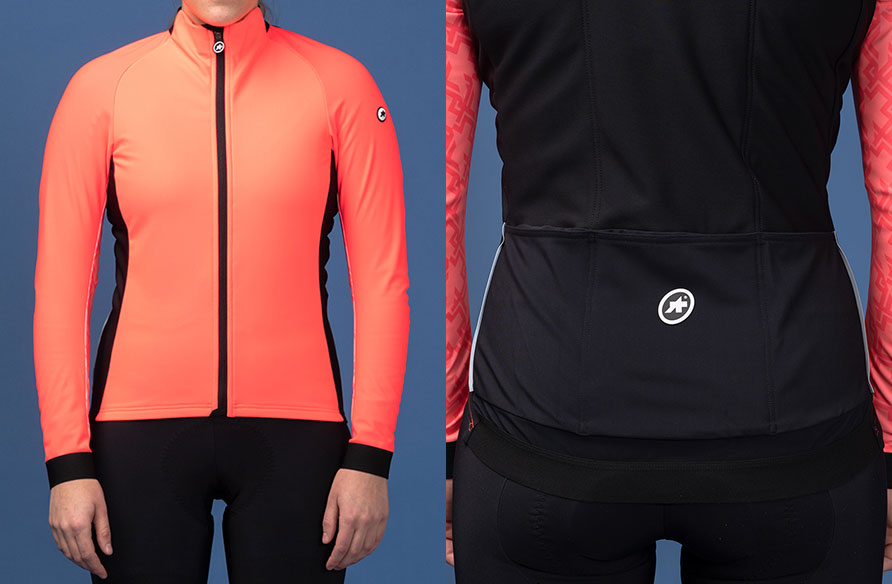
PEARL iZUMi PRO AmFib Shell
Thanks to its waterproof softshell construction, this heavy-duty shell is ready to withstand the harshest midwinter storms and offers enough room to add plenty of layers for the season's coldest days.
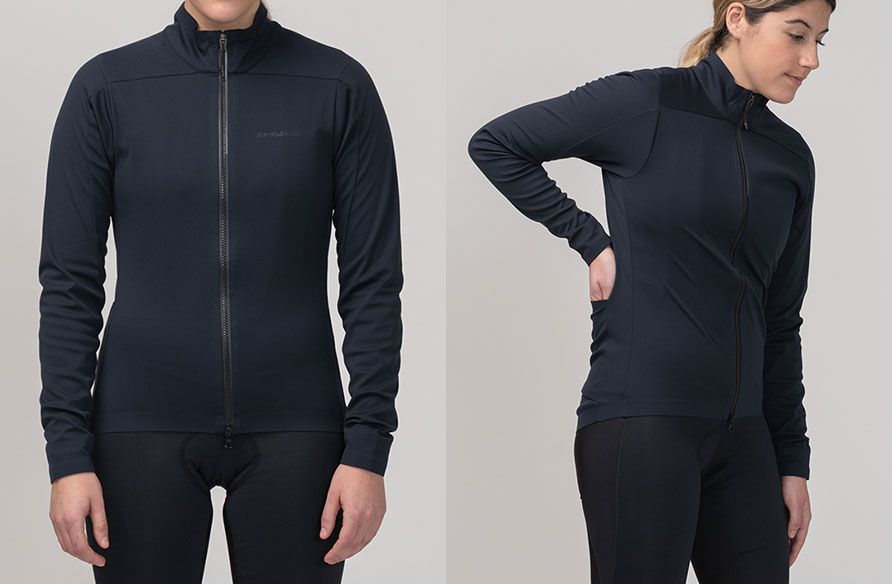
Gore Wear C7 GORE-TEX SHAKEDRY™ Jacket
Although it stashes easily in a jersey pocket, this minimalist rain shell offers unsurpassed protection from wind and rain, making it ideal both as backup and as a reliable choice for cool, rainy days.

Long Sleeve Jerseys
Depending on your location, a long sleeve jersey can serve as a warming mid layer in frigid temps or as a highly effective outer layer for warmer days and milder climes. Keep your intended use in mind, as features like water resistance and wind-blocking panels translate into additional comfort when worn in lieu of a jacket.
PEARL iZUMi Attack Thermal Jersey
Four-way stretch softshell material and a refined, cycling-specific cut make this jersey a great choice for shoulder season days where a jacket is too much and a long sleeve summer jersey lacks the required warmth.

Giordana FR-C Pro Long Sleeve Jersey
Equally adept as an outer layer on cool days or a layering piece mid winter, this race-worthy jersey has become a cornerstone of our winter wardrobe for its impeccable fit and impressive versatility.

PEARL iZUMi PRO Merino Thermal Jersey
This has become one of our most recommended mid winter layering pieces thanks to its layering-friendly fit and merino wool fabric, which delivers a remarkable amount of warmth in a surprisingly lightweight package.
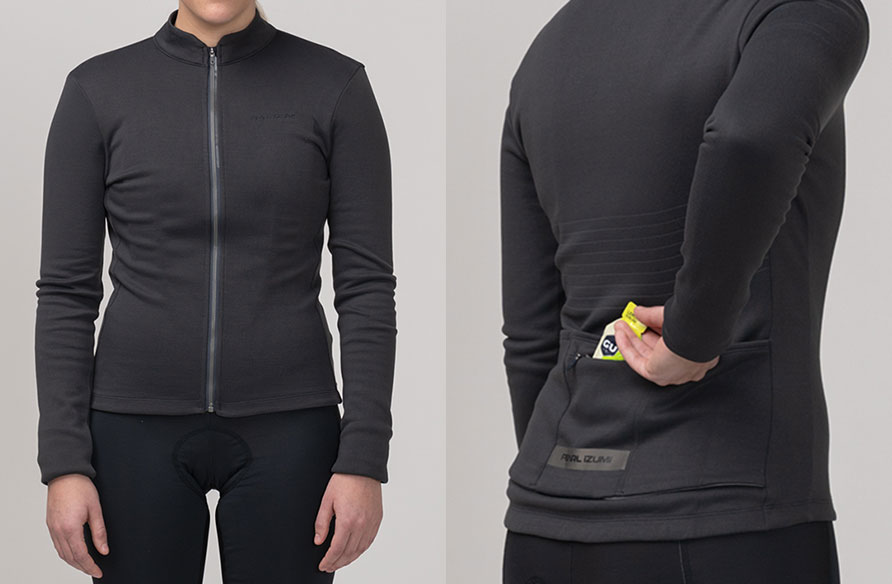
Castelli Perfetto RoS Long Sleeve Jersey
Designed to be the "perfect" outer layer in variable conditions, this standout piece offers a slim, race-worthy fit, total protection from wind and rain, and just enough ventilation to ensure that you don't overheat on hard training rides.
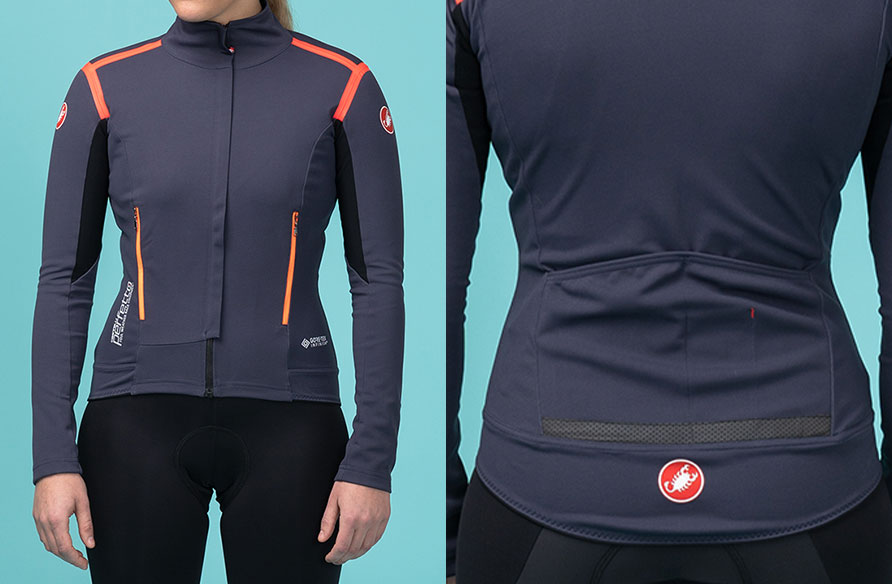
Baselayers
Although its importance is sometimes overlooked, a good baselayer is a critical component of a strong winter kit. Look for an appropriate amount of warmth for the temperatures in your area and demand excellent moisture-wicking properties—moisture management is essential for staying warm and comfortable in the cold.
Giordana Ceramic Long Sleeve Baselayer
Long sleeves and a body hugging fit make this lightweight baselayer perfect for use under a winter jersey or jacket, where its ability to wick sweat keeps you dry and warm throughout your ride.

Castelli Flanders 2 Warm Long Sleeve Baselayer
Beyond feeling wonderful against the skin, this mid winter baselayer's fleece material blends impressive moisture management with considerable warmth, allowing you to stay comfortable while wearing fewer layers.
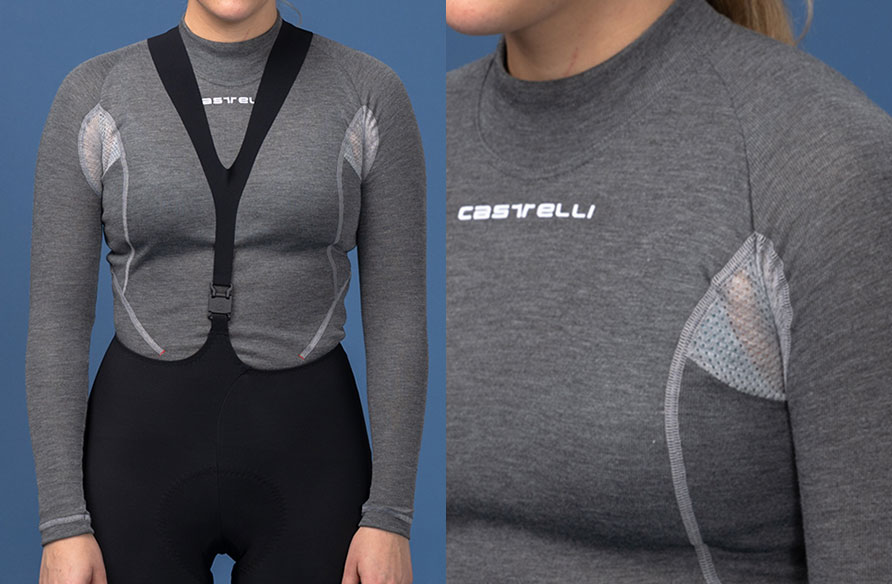
PEARL iZUMi Merino Thermal Long Sleeve Baselayer
Thanks to its merino wool construction, this heavyweight baselayer not only retains a remarkable amount of body heat but it manages to do so even when wet, ensuring that hard efforts don't leave you shivering in the saddle.
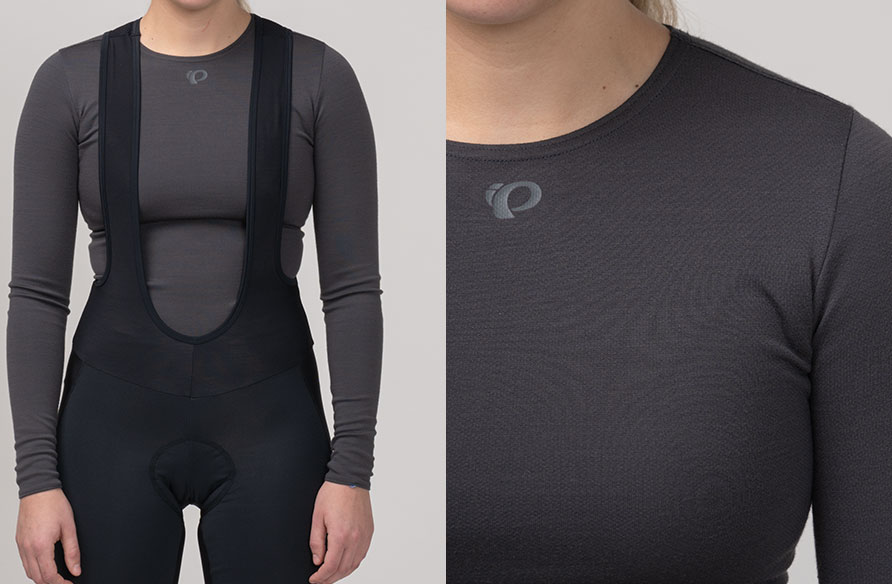
Gore Wear WINDSTOPPER™ Baselayer
Pairing wind-blocking, highly water resistant material with the wicking properties necessary to keep you dry when you're pushing hard, reach for this baselayer when frigid winds keep all but the heartiest riders inside.
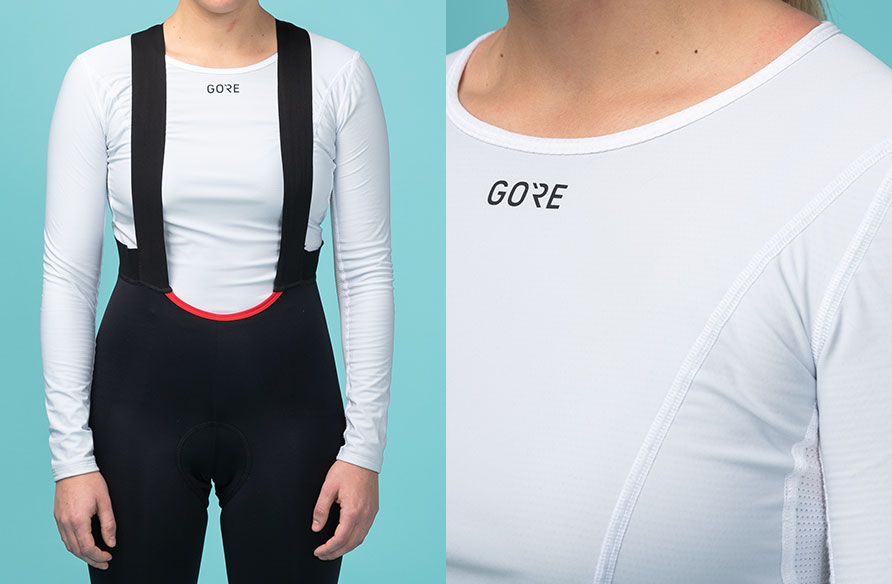
Bib Tights
A great set of bib tights is a balancing act between appropriate weather protection, just enough warmth, and the same considerations that affect bib short choice such as fit, materials, and chamois. Although bib shorts and knee warmers typically get the nod on warm winter days, we consider bib tights a cornerstone of a well-stocked winter wardrobe.
Giordana Fusion Bib Tights
We've come to regard these as an ideal early winter training piece, thanks to the moderate warmth of the ThermoRoubaix fabric, as well as the irresistible comfort of the recently updated Cirro S padded insert.

Assos UMA GT Winter Bib Tights
We're inclined to consider these the finest bib tights available today, owing in equal measures to that impeccable Assos fit, the warm and weather-protective NEOS fabric, and the exclusive UMA GT insert, which must be felt in person to be fully appreciated.

Castelli Meno Wind Bib Tight
Staying warm on the season's coldest days is largely about minimizing lost body heat, which is precisely why we reach for these wind-blocking bib tights when heading out into below freezing temperatures.

Castelli Nano Flex Pro 2 Bib Tights
Thanks to their stunning ability to shrug off wind and rain, these have become a winter wardrobe staple for riders living in coastal climates, as well as anyone who refuses to let rain or sleet keep them on the couch.
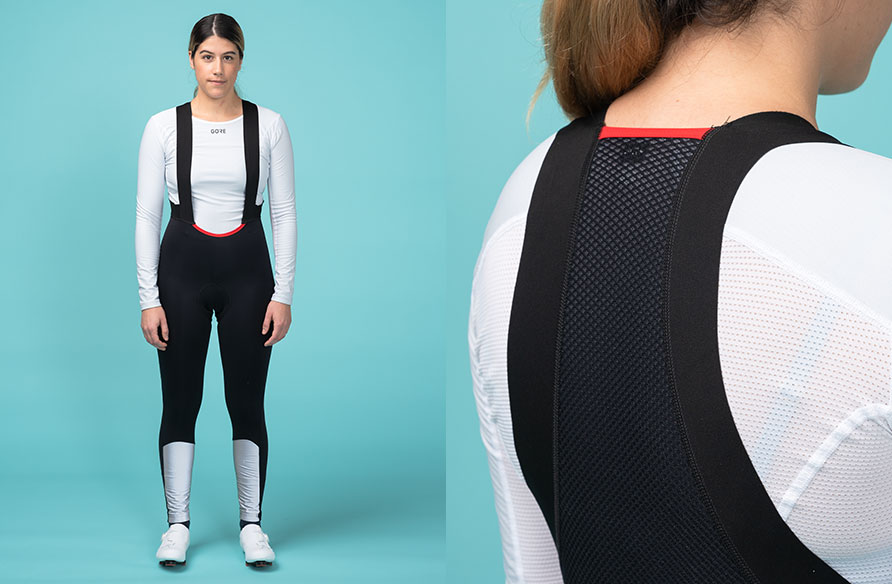
Gloves
For seasoned winter riders, gloves are the subject of much debate as the correct amount of warmth and insulation varies both by your climate and your physiology. It’s worth the time to get this choice right. The perfect pair of gloves can expand the weather range of your kit.
PEARL iZUMi ELITE Softshell Gel Glove
Combining rain and wind protection, just enough insulation, a comfortable gel palm, and a low-profile fit that keeps you in control of your bike, these gloves have become a prized piece for riders who log lots of winter miles.
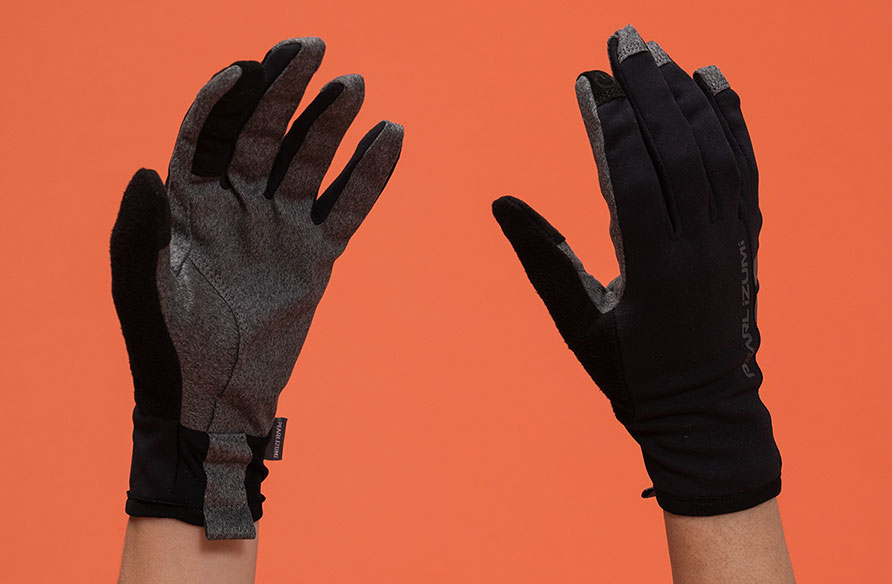
PEARL iZUMi Escape Thermal Glove
These low-profile gloves offer just enough insulation and wicking properties necessary to keep you warm and dry, and are enhanced with smartphone compatible finger tips.
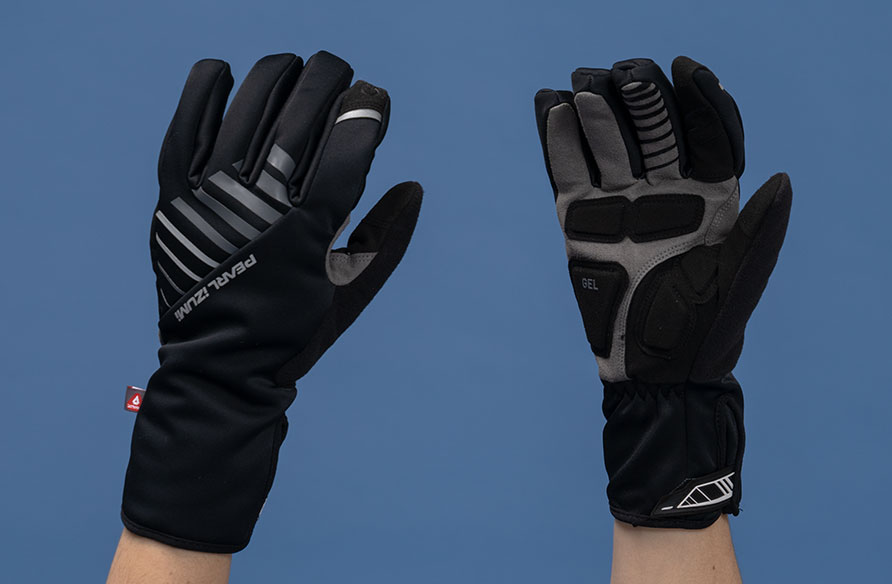
Castelli Scalda Pro Glove
There's no need to worry about frozen fingers with these windblocking gloves that offer ample weather protection and generous insulation in a low-profile package that won't compromise your feel for your handlebars.

Castelli Perfetto RoS Glove
Expertly blending total weather protection, courtesy of GORE-TEX INFINIUM™ stretch construction, and a sleek, low profile fit, these are perfect on cool days where staying dry is the key to staying warm.
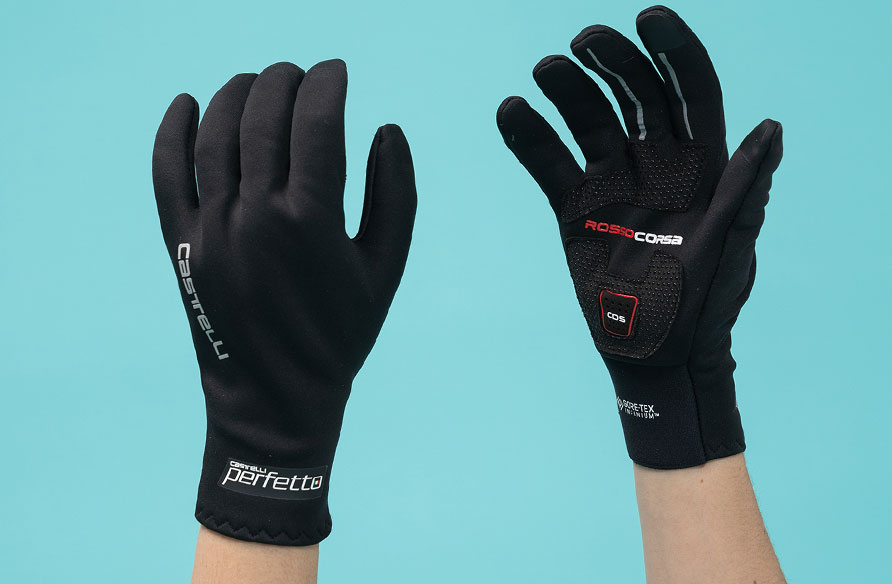
Shoe Covers
The extremities are the first parts of the body to succumb to cold, which makes keeping your feet warm an essential piece of the puzzle. To get the best from any of these options, consider pairing with a set of shoes a half size larger than you’d typically wear. That extra room allows for better circulation which directly translates into extra warmth.
Assos Assosoires Spring Fall Booties
These booties borrow the sleek profile of an aero shoe cover, adding just a little bit of warmth that makes them ideal for early winter rides.

Castelli Poggia 3 Shoe Covers
Designed to shed rain and keep your feet dry all day, these midweight shoe covers are a perfect choice for midwinter riding when sleet or snow could make an appearance.

Castelli Estremo Shoe Covers
The warmth and weather protection offered by these fleece backed, GORE-TEX shoe covers make them our pick for riding in cold and stormy conditions.
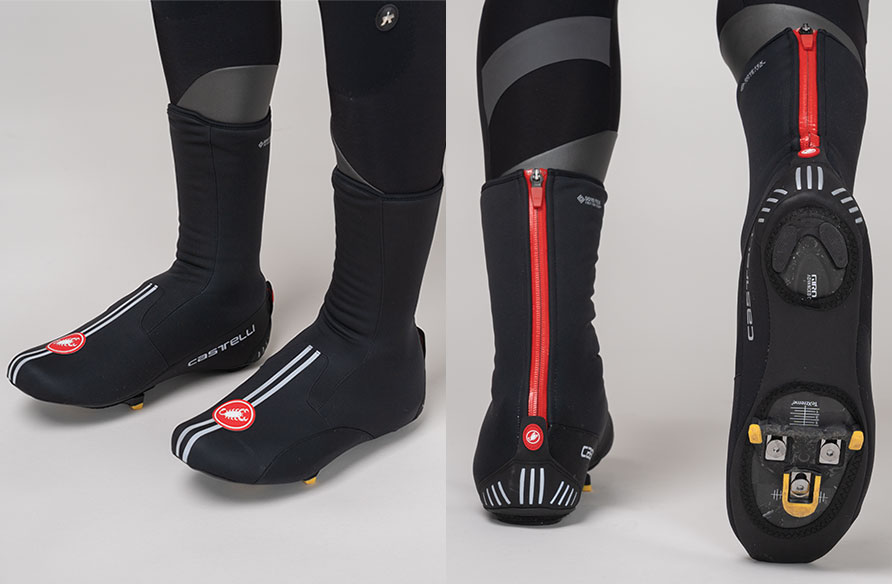
Gore Wear C3 GORE-TEX Overshoes
When faced with consistent rain and sleet, these guaranteed waterproof GORE-TEX overshoes are the right choice, easily shrugging off precipitation and the heaviest wheel spray.
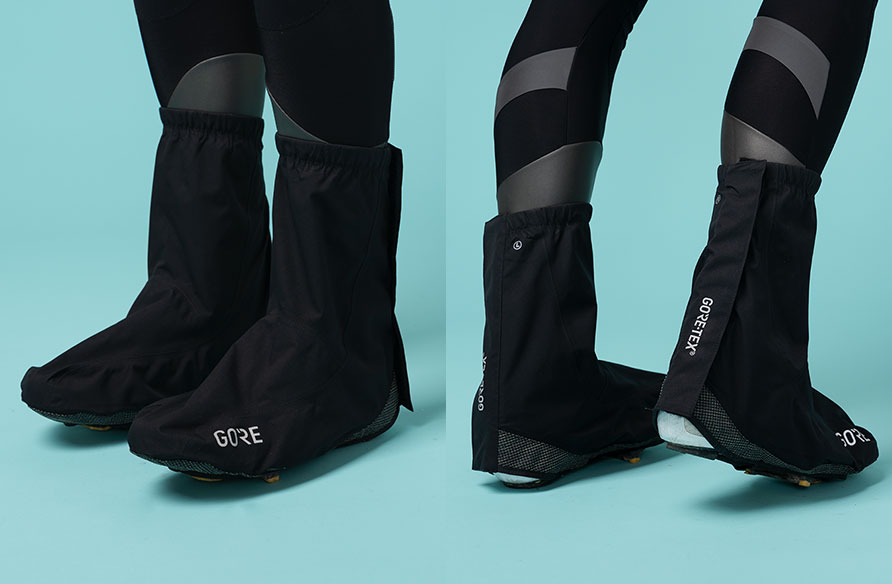
Cycling Caps
Much like gloves, the right winter cycling cap can expand the range of your kit. Insulation and wind-blocking materials retain maximum warmth, while a lightweight option keeps you from overheating on warmer days.
Castelli Viva2 Thermo Skully Hat
Sleek and low profile, this lightweight cap fits easily under a helmet without extra bulk, adding the right amount of warmth for milder days.
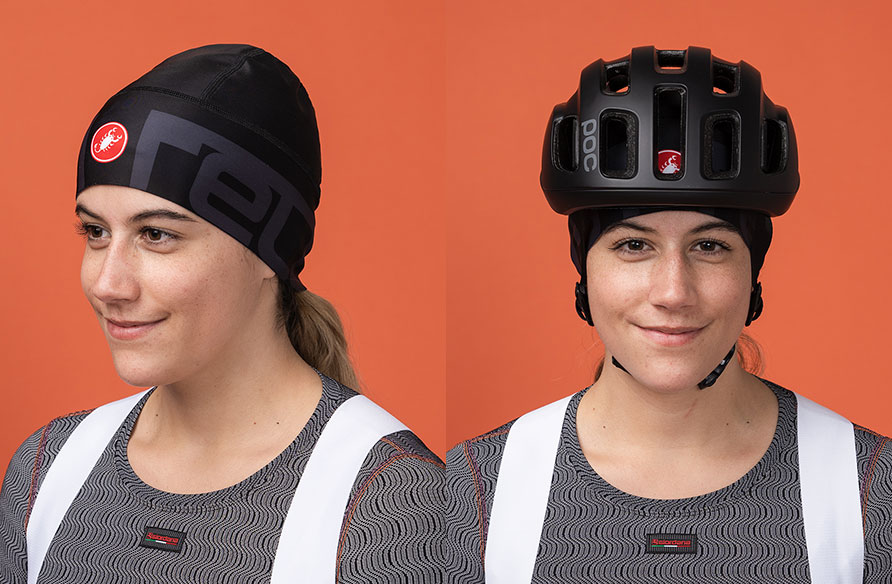
Castelli Difesa Thermal Cap
Think of this as a prototypical winter cap, with a rib knit flap to keep ears warm and a visor that offers just enough coverage to keep winter precipitation out of your eyes.

Assos Assosoires Ultraz Winter Face Mask
This balaclava-style hood fits seamlessly under your helmet and will keep frigid wind off your face, minimizing the risk of frostbite on the season's coldest rides.

Gore Wear WINDSTOPPER™ Thermo Beanie
This beanie's windproof and highly water resistant fabric keeps cool breezes and frozen precip from sapping your body heat, adding a shocking amount of warmth to your winter riding kit.
